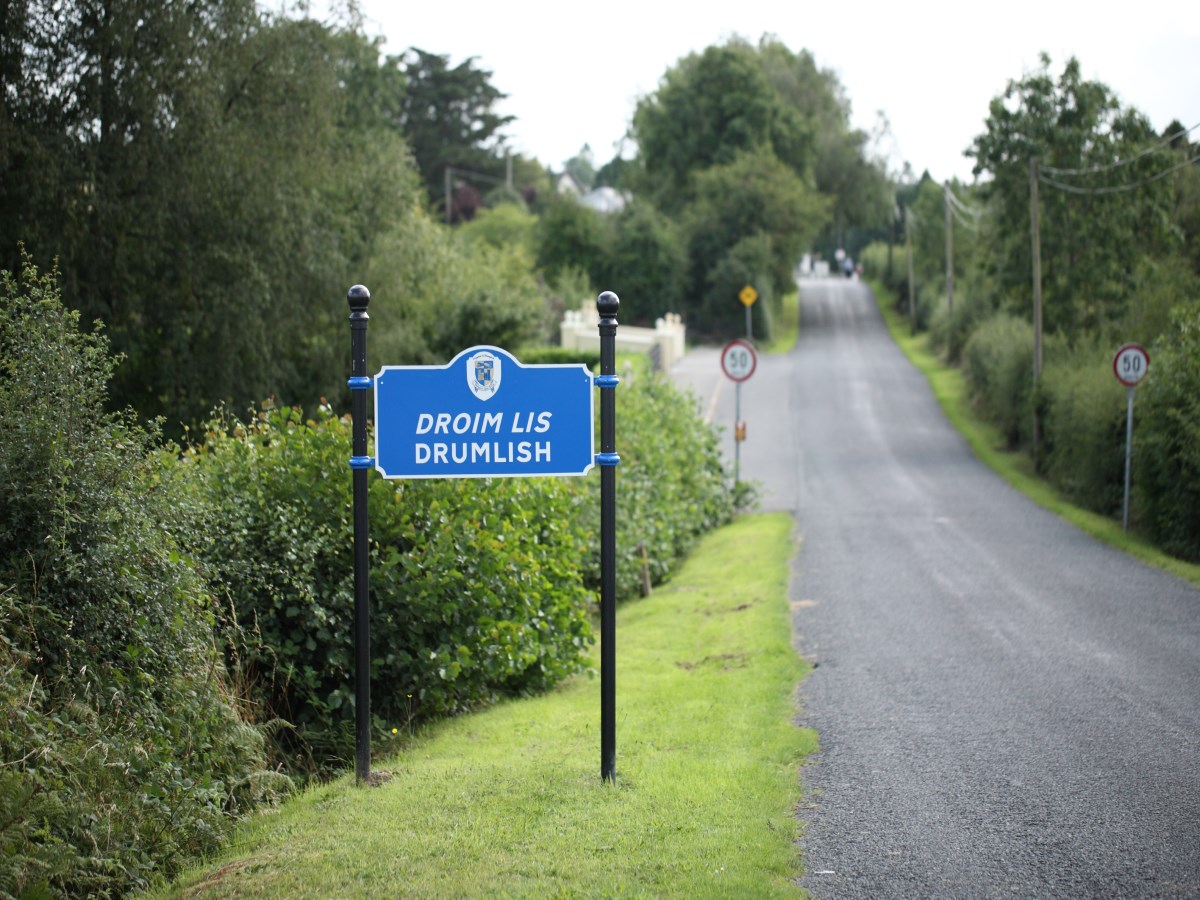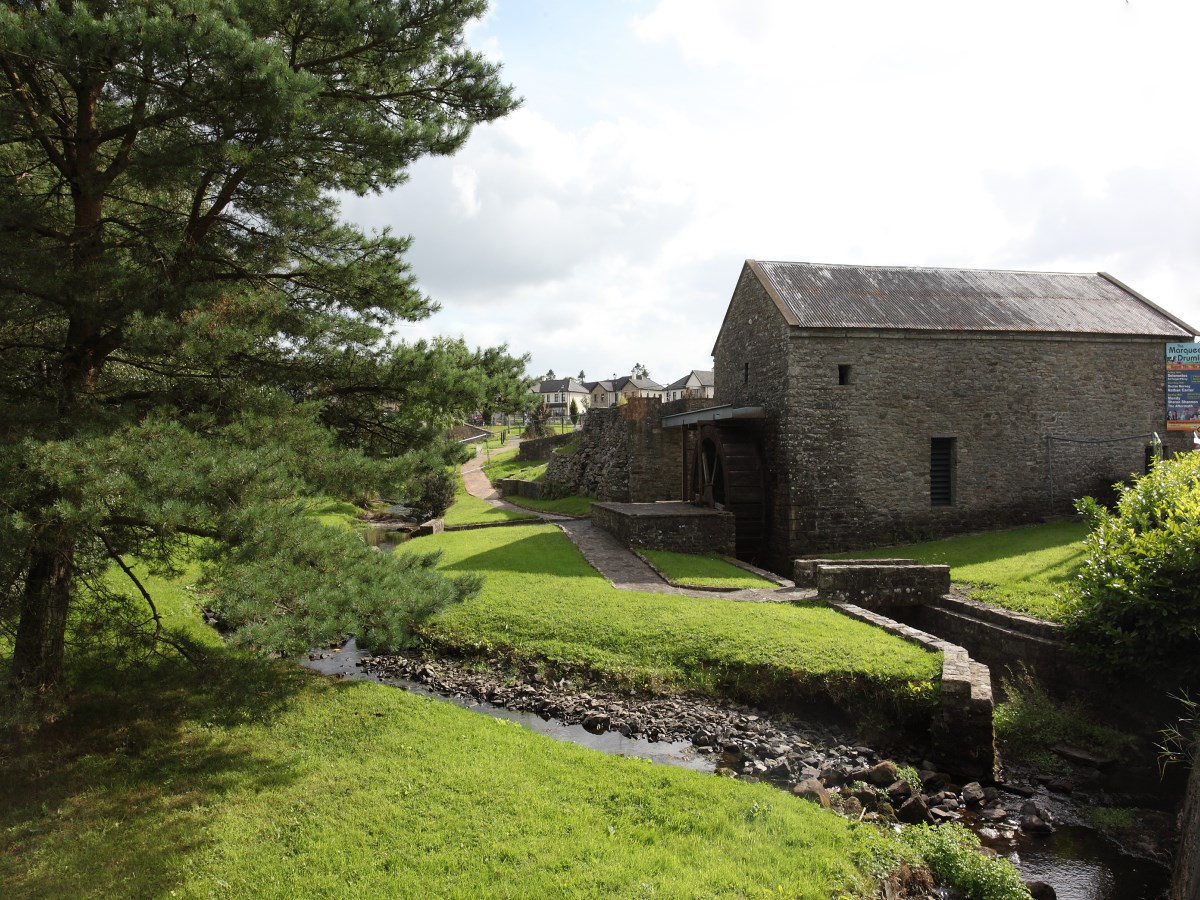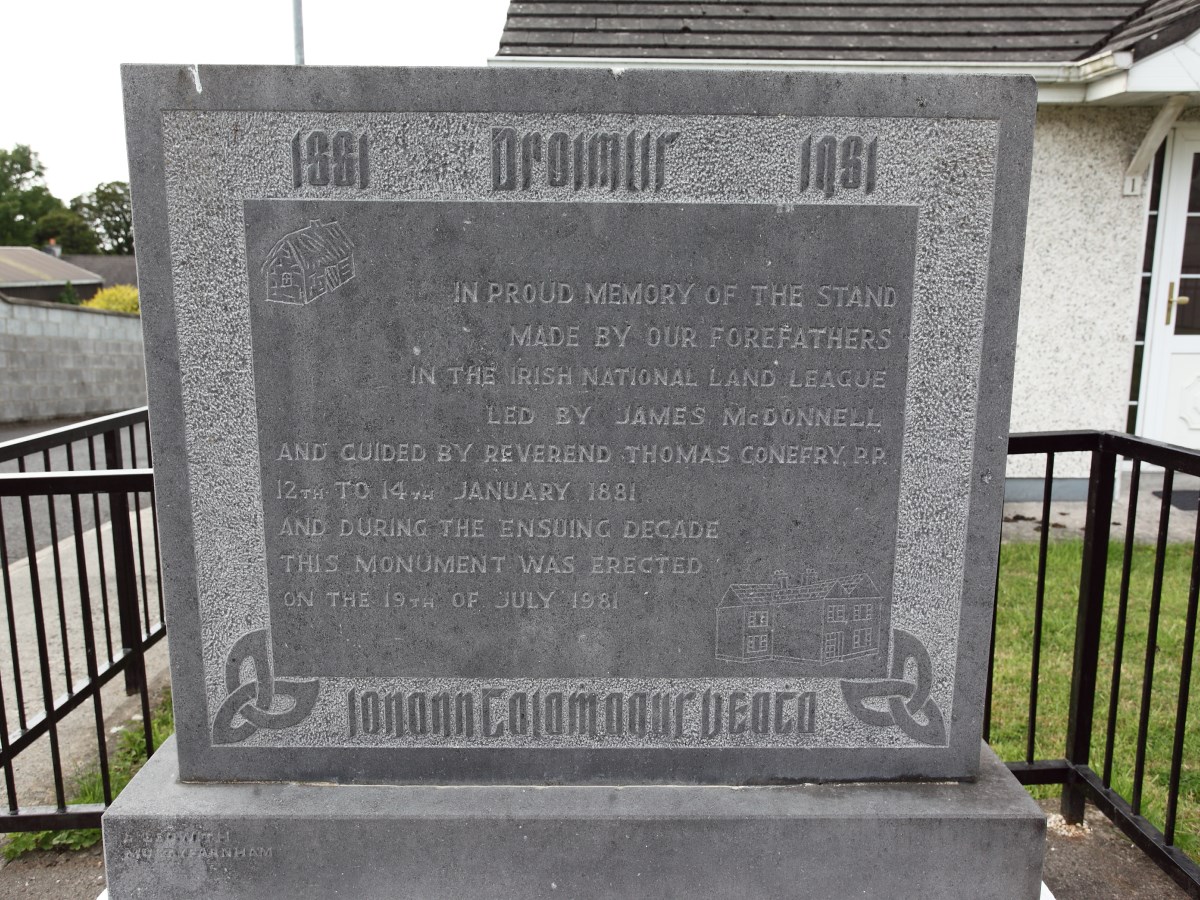Drumlish

Drumlish is a large picturesque village in North County Longford. The village of Drumlish is west of a ridge of low hills running north-eastwards from Newtownforbes to Arva in County Cavan. It is close to the Cavan and Leitrim Borders and is 11 kilometres from Longford Town. Drumlish Parish extends from the eastern side of the parish of Clonguish to a short distance beyond the village of Ballinamuck. The area is predominantly rural with lakes and unspoiled landscape.
The village is the starting point for the climb of Corn Hill. It is a pleasant climb and there are fine views from the summit, which is crowned by a cairn.
Drumlish is home to some of Ireland's country and music legends and the song 'The Marquee in Drumlish' commerates the great music festival held in the town in the early 1970's. The festival was revived in 2007.
History of Drumlish
Once part of the ancient parish of Killoe, Drumlish achieved its independence as a parish around the year 1822. It then became known as the parish of Monaduff, a name obtained from that of the chapel which stood about half way between Drumlish and Ballinamuck. The chapel stood on the old road which lay left of the present road. In the year 1834, the parish of Monaduff became known as Drumlish.
Land War
Drumlish earned its place in history due to the participation of its people in the Land War, 12-14 January 1881. On the 11th if January in 1881, a confrontation between the members and adherents of the Irish National land league, and the Royal Irish Constabulary took place in the parish of Drumlish. Both parties came to serve notice of eviction for non-payment of rents, and were accompanied by a large constabulary. This was the bailiff who came to enforce rent collection, which the people of Drumlish were unable to pay. Unknown to its inhabitants, a confrontation between the members and adherents of the National League and the Royal Irish Constabulary was proceeding in the village of Drumlish. The purpose of this confrontation was to collect rent and evict those people unable to pay. The people of Drumlish and Ballinamuck, on hearing the unwelcome news, made a hasty exit from their slumbers and prepared to resist the process server. In 1882, three hundred families were evicted from within a radius of 5 kilometres around Drumlish. However, the people of Drumlish were not willing to give in lightly and it wasn’t long before things came to a head. The people were called by the church bell and armed with guns, scythes, reaping hooks and pitchforks to meet openly with the lord of Granard, his process-server, bailiffs and the red coats in Drumlish. Under the leadership of father Conefrey, an open battle was averted. The local people eventually won and were allowed to reduce rents. Father Conefrey is remembered, even to this day, in Drumlish and surrounding areas for his bravery and courage. This famous episode of the Land War which took place in Drumlish is documented in the book The Land War in Drumlish by Fr. P. Conefrey.
Drumlish Protestant Church
Built in the early 1800’s, Drumlish Protestant church, a limestone building, was situated on the hill road almost directly opposite the old catholic church. It flourished for many years, however in the early 1900’s the Protestant congregation began to decline. The last service, with an attendance of only two people, was in 1932. Shortly afterwards, the church was closed and fell into disrepair. In 1949/50, it was unfortunately demolished.
Melkagh Dolman
Melkagh is the last spectacular of the three known portal dolmans in the County. There are a number of stone pillars which date back to pre-Christian times. Usually in Pagan days, they were erected as memorials to the dead. In some cases, however, they were used as a medium through which worship was paid to the departed dead. During penal times mass was offered in the forth in Melkagh. Melkagh is situated 2.5km north of Drumlish on the main Drumlish/Cloone road.
Things to see & do in Drumlish
The Old Corn Mill

The Old Corn Mill at Drumlish is situated along the main Longford/Cavan Road, almost beneath the shadow of Cairn Hill. It has been in the Rogers family for nearly two centuries and did a flourishing business up to the 1950s. It served a wide area for the milling of oats into oatmeal and also corn-crushing. During the famine of 1846/1847 the oats crop helped many to survive and as a result Drumlish did not suffer as badly as other areas. In recent years, the exterior of the Mill and its surround has been restored by Drumlish Enterprise Group under the Community Employment Scheme and has enhanced the entrance to the village.
The Land War Monument

The monument commemorates the people who took part in the Land War. It was designed by John Carthy and Mattie Casey, erected on a site donated by Michael Burbage and unveiled on 19 July 1981. nnJames McDonnell of Melkagh is named on the inscription and represents the thousands of men and women who took part in the fight against the tyranny of the landlords. The symbolic cabin of 1881 and the dwelling house of 1981 mark the dramatic change in living standards that has accompanied the transition from tenancy to pride of ownership.
Kilmahon Graveyard
At Kilmahon there is an ancient cemetery and some faint traces of an early church or ‘ceall’ - the cell of a hermit. This hermit was St Muadan or St Mahon and reference is made to him in the ancient manuscript relating to St Colmcille. In fact he is a contemporary of Colmcille and so lived in the 6th century. The Book of Leinster speaks of Mahon of Kilmahon and gives the 12th May as his feast day. The Martyrology of Donegal gives the 6th of March as his date of birth.
Lough Salach
Set in a remote and unspoiled landscape Lough Salach is a haven of tranquillity. The lake teams with pike, perch, bream, roach and it situated approximately 5 kilometres from Drumlish.
The Marquee in Drumlish
The Marquee in Drumlish is an annual music festival held in August every year since 2009 in Drumlish featuring Irish and International performers. It is extremely popular and visitors travel from far and wide to attend it. For more information please see The Marquee in Drumlish.



